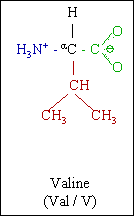


The lack of characteristic neuropathology of vCJD in the brain, the absence of detectable PrP in the tonsil appendix and spleen, together with a PrP RES type 1 pattern in the cerebral cortex all provide supportive evidence for this being a case of sporadic CJD, similar to the other rare cases occurring in valine homozygotes with a type 1 PrP RES.
VALINE MONEYCONTROL FULL
4Neuropathological review of these two earlier cases has found changes in the brain consistent with sporadic CJD full clinical and genetic data are not available on these cases, but neither showed evidence of PrP RES accumulation in lymphoid tissues. Firstly, the case represents sporadic CJD, of which there have only been two cases younger than 30 in the United Kingdom since 1970. Two possible explanations arise for the case described. 3Įarly age of onset, protracted psychiatric prodrome, and duration of illness distinguish variant CJD clinically from sporadic CJD.

Western blot analysis of frozen cerebral tissue showed a PrP REStype 1 pattern. Immunocytochemistry for PrP on lymphoid tissue in the spleen and appendix was negative. Immunocytochemistry showed a positive reaction in a reticular and perineuronal distribution in the cerebral cortex and the cerebellum, but no PrP plaques were present. Necropsy disclosed cerebral atrophy, and neuropathological studies showed a spongiform encephalopathy which was most marked in the basal ganglia, with widespread neuronal loss and gliosis. In March 1999 he was in a state of akinetic mutism and died in August 1999. He was mute with eyelid apraxia, generalised myoclonus, marked primitive reflexes with Gegenhalten tone in the limbs, and bilateral extensor plantar responses. The codon 129 genotype was valine homozygous.īy October 1998 he was dependent on his wife for dressing, toileting, and feeding. The open reading frame of the prion protein gene demonstrated no mutations. A tonsilar biopsy for protease resistant PrP was negative. Repeat EEG demonstrated a left hemispheric slow wave focus, cranial MRI showed atrophy of the whole of the left hemisphere, and a SPECT perfusion scan demonstrated marked underperfusion of the posterior temporoparietal cortex on the left. Oligoclonal bands and CSF 14–3–3 protein were negative. Protein in CSF was mildly raised at 0.62 g/l and contained 2 white cells/mm 3.

Thyroid function, B12 and folate, an autoimmune screen, protein electrophoresis, serum copper, serum caeruloplasmin, heavy metal screen, porphyria screen, IgA antibodies to gliadin, serological tests for Treponema and human immunodeficiency virus tests were all normal. By February 1998 it was clear that he had a receptive and expressive dysphasia and right extensor plantar response. He was diagnosed as having an anxiety state and referred to a psychiatrist who thought that an organic brain syndrome was more likely. Haematology and biochemistry, a cranial CT, and an EEG were normal. Neurological examination was otherwise unremarkable. He was seen in December 1997 and at this stage appeared anxious and with communication difficulties in that he could understand what his wife was saying to him but could not understand anyone else. His wife noticed that he had become more forgetful and increasingly agitated which she attributed to stress at work. 2 Here we report on a young patient with CJD who was a valine homozygote at codon 129.Ī previously well 27 year old electrical engineer complained that he had difficulty concentrating at work. There has been speculation as to whether valine homozygosity or heterozygosity at codon 129 confers resistance to vCJD, delays clinical onset of disease, 1 or may lead to a clinical syndrome distinct from cases of CJD described so far. All cases that have undergone genetic investigation have been methionine homozygotes at codon 129 in the prion protein (PrP) gene. To date there have been 52 reported cases of variant Creutzfeldt-Jakob disease (vCJD) in the United Kingdom.


 0 kommentar(er)
0 kommentar(er)
